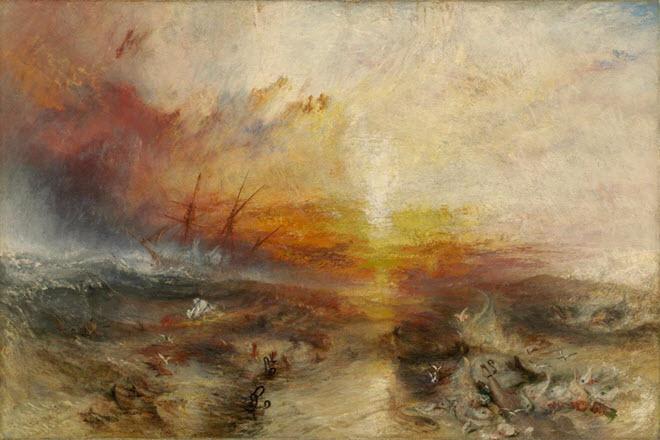“I Can’t Breathe”: International Responses to the BLM Movement

Credit: Black Lives Matter march by Victoria Pickering is licensed under CC BY-NC-ND 2.0
Resource Description
This module is intended for students interested in having a global perspective on the impact of George Floyd’s death and the Black Lives Matter (BLM) movement. Students will survey BLM in the U.S. context and its international iterations around the globe by addressing the complexity of race in relation to social justice, political oppression, and the role of the media and technology. Through the assigned materials, students will grasp the ways in which racism manifests across cultural contexts and local histories, with particular attention to the regions of Central Europe (Germany and France), East Asia (China, South Korea, and Japan) and Latin America and the Caribbean (Mexico, Colombia, Brazil, Haiti, and the Dominican Republic).
Learn moreArtistic Responses to the Zong Massacre (1781)
Resource Description
Suitable for introductory or humanities survey courses, this module offers teaching resources for a unit on the 1781 Zong massacre. It focuses on artistic responses to the massacre and on how the massacre is a representative event of the Transatlantic Slave Trade. The module includes artworks and texts that could be used in the classroom, discussion questions and activities, and a culminating writing prompt. This module invites students to reflect on the gaps in the colonial archive and to think about the role of art and literature in shaping understandings of historical events. It also provides students with an opportunity to recognize how the dehumanizing logic of slavery shaped modernity and how black artists challenge its legacy through their work.
Learn moreChristopher Columbus: Commemoration and Controversy
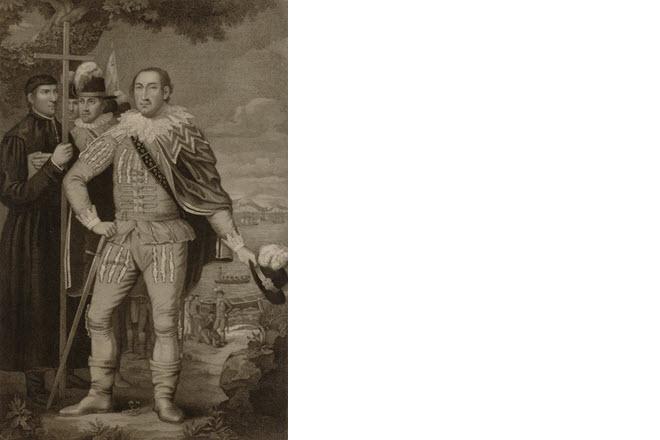
Credit: Landing of Christopher Columbus by David Edwin. Smithsonian American Art Museum, Gift of International Business Machines Corporation, is licensed under CC0.
Resource Description
This module enables students to reflect critically and in an historically informed way on how Christopher Columbus has come to signify both belonging and exclusion in the United States. The two-week module explores four discrete themes: colonization, focusing on the four voyages and their immediate consequences; the mythical female figure of Columbia in the U.S.; the creation and circulation of Columbus as an Italian American icon; and the recent protests and debates concerning statues and other commemorative images and rituals. The material includes essays by historians and folklorists, journalistic coverage, Columbus’ own writings, sample protest petitions, and examples from popular culture. These resources offer perspectives on the protest movements of 2020 that brought to fore fundamental questions about America itself.
Learn moreEthical Dimensions of Renewable Energy and Sustainability Systems

Credit: Solar Panels by American Public Power Association is free to use
Resource Description
This course presents an examination of ethical issues relevant to systems-based research procedures, professional conduct, social and environmental impacts, and embedded ethics in research and professional practice in RESS based jobs. In this course, you will consider case studies of ethical issues that can arise when engaging renewable energy and sustainability systems. You will also develop an ethics case study based on your area of RESS interests. The goals of the course are to provide you with tools for analyzing ethical issues both in the line of professional duties and in consideration of the various ethical issues that face an entire sector of renewable energy and that underpin the very reasons for taking a sustainable and renewable approach. Learn moreGold
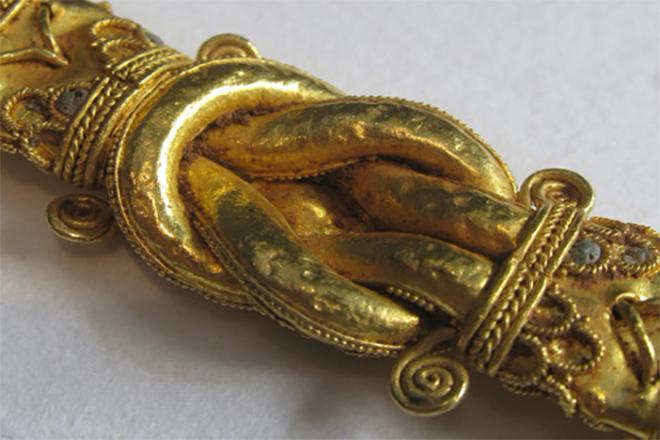
Credit: Heather C. McCune Bruhn, 2017, licensed under CC BY-NC-SA 4.0
Resource Description
In this two-part module, developed by Heather McCune Bruhn and Sarah J. Townsend, we will explore gold. First we’ll look at gold as a substance and examine how it is obtained from the earth (along with some of the dangers and consequences involved). Next we'll examine what makes gold so important: its allure and symbolism in Prehistory, as well as in the Ancient and Medieval world. Then we'll look at the importance of Africa as a source of gold throughout the centuries before exploring some ways of working gold. Part II of this module examines the extraction of gold in the Amazonian region of South America, focusing on its impact on the environment, indigenous people, and the miners themselves.
Learn moreLapis Lazuli
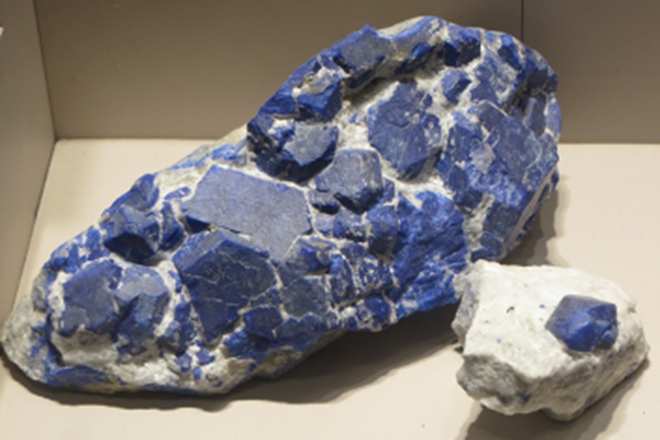
Credit: Lapis Lazuli by Heather McCune Bruhn, Penn State University, licensed under CC BY-NC-SA 4.0
Resource Description
Lapis lazuli is a bright blue semiprecious stone, first known only in remote mountains in Afghanistan and Pakistan, and more recently in Brazil. This module explores lapis lazuli's use first in the production of high status objects in the Ancient world (Ancient Near East, Rome, etc.) and then its use as an expensive blue paint pigment. Since the process for extracting ultramarine blue pigment from lapis lazuli is so long and labor intensive, true ultramarine is still one of the most expensive pigments in the world. You will be able to read about and watch videos detailing the ultramarine extraction process, as well as the production and use of some alternatives to ultramarine blue.
Learn moreModernism’s Monsters
Resource Description
The modern era is full of fears. The more we know about our world, the more frightening it can be, and the 1950s were a time in which the threat of nuclear war, fears of communist takeovers, and new advances in science were all combining to make the modern world a very frightening place. This fear was reflected in art and in popular culture, particularly in inexpensive B-movie science fiction films. This module explores some of that fear, and the artistic and popular works inspired by it. Watch out for the giant ants!
Learn moreModernity Unmoored: Ships as Material and Metaphor
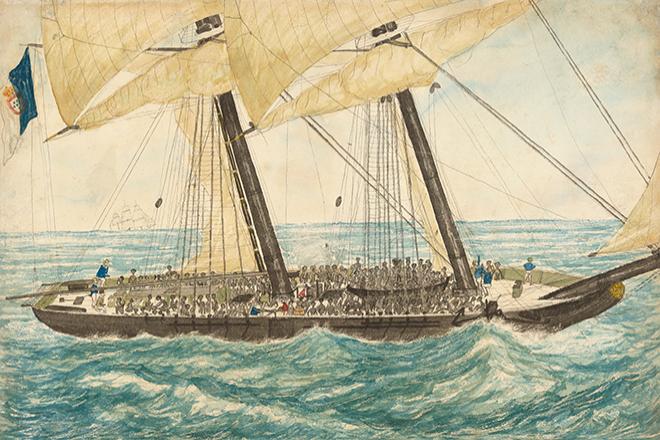
Credit: Lieutenant Henry Samuel Hawker, The Portuguese slaver Diligenté captured by H.M. Sloop Pearl with 600 slaves on board, taken in charge to Nassau, May 1838. Collection of the Smithsonian National Museum of African American History and Culture.
Resource Description
This series of modules approaches ‘ships’ and ‘boats’ as material and metaphor for thinking about migratory experiences and the movement of peoples, goods, and commodities, as they relate to the idea of modernity on a local, transnational, and planetary scale. The modules focus on literary, visual, and cinematic representations of ships and boats as a basis for engaging in comparative work. Ships and boats are considered not just as physical objects, but as technologies and symbolic objects that speak to the dynamics of circulation and/or extraction in the context of slavery, colonialism, and global capitalism. The modules underscore the role they have played in the establishment and subversion of racial, cultural, economic, and political divides across space and time.
Learn moreOchre
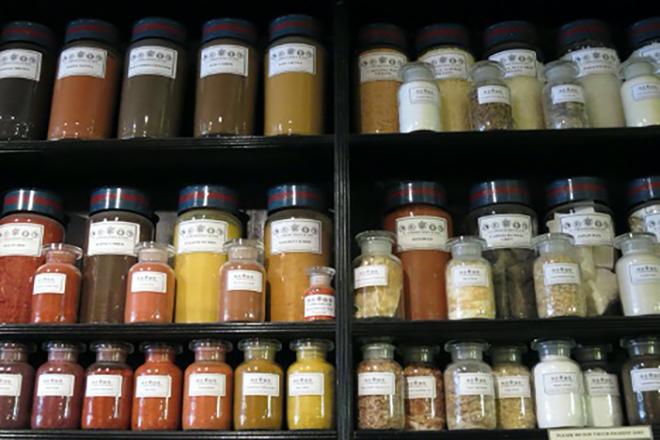
Credit: Ochre pigments and paint additives and resins at Cornelison and Sons, London by Heather C. McCune Bruhn, 2014., licensed under CC BY-NC-SA 4.0
Resource Description
Ochre, which is essentially rust (iron oxide), is humankind's first pigment, and one of the most plentiful sources of color on earth. Ranging from red to orange, yellow, brown and even violet depending on trace minerals and moisture levels, it is extremely stable and fairly non-reactive. It can be prepared very easily (colored rocks and soil can be crushed, washed, and mixed with a binder to make paint), and was first used by humankind around 100,000 years ago. It is still in use today. This module introduces ochre pigment and explores its use in three case studies: Blombos Cave in South Africa, in Italian Renaissance frescoes, and in environmental cleanup.
Learn morePolitical Asylum: An Introduction from an Arts & Humanities Perspective
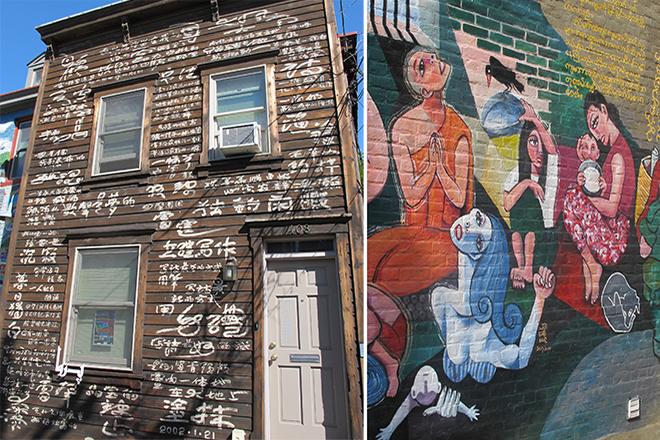
Credit: City of Asylum by Jutta Gsoels-Lorensen is licensed under CC BY-NC-SA 4.0
Resource Description
This module, suited for a General Education course, is conceived as a week-long introduction to the legal institution of political asylum through various forms of cultural expression, including refugee writing, documentaries, and visual art.
Approaching the theory and practice of international protection through the lens of narrative and narrative acts, this unit provides teaching materials that prompt students to consider the workings of “story” in a variety of contexts, ranging from the aesthetic to the legal; the therapeutic to the political. Designed for active learning, the enclosed activities seek to create space for engaged classroom debate through guided textual analysis, media criticism, (creative) writing prompts, and cross-disciplinary forms of “reading.” Viet Thanh Nguyen’s The Displaced: Refugee Writers on Refugee Lives will serve as the primary class text. Students will also be introduced to Pittsburgh’s City of Asylum, a non-profit, residency program for writers facing persecution in their countries.
Learn more
